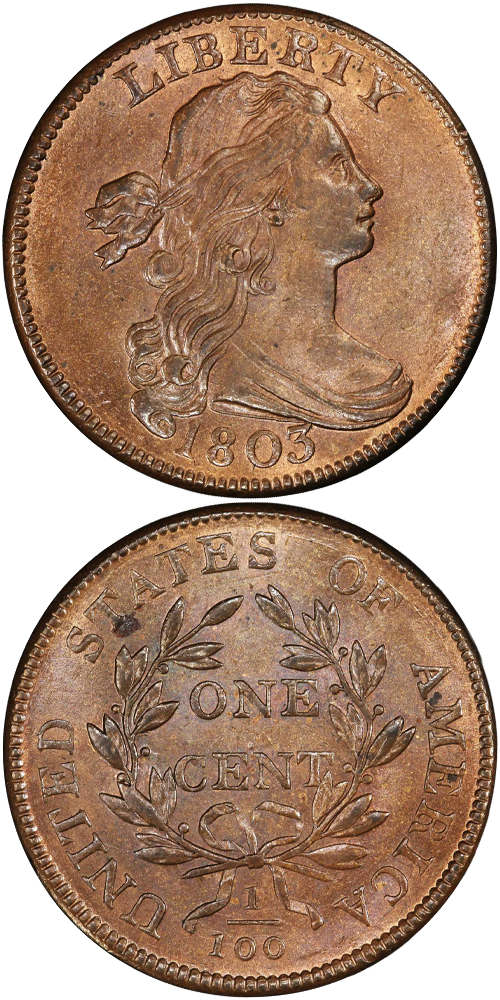1803 Draped Bust Cent
Small Date, Small Fraction
Though more than six million total cents were struck in the years 1802 and 1803, the United States Mint was in a state of turmoil. When the seat of government moved to Washington, D.C. from Philadelphia in 1800, the executive, legislative, and judicial functions picked up and moved to the banks of the Potomac, except for the Philadelphia Mint. With highly trained personnel, heavy equipment that was nearly impossible to move or replace, and vital proximity to the Philadelphia banks that were the major depositors of gold and silver, the Mint was allowed to stay behind. Some Congressmen campaigned against the Mint, questioning its usefulness, efficiency, and expenditures. A two-year legislative reprieve came in March 1801, allowing the Mint's continued existence in Philadelphia until 1803. In preparation of that short-term fix expiring, Samuel Mitchill of New York was chosen to lead "the Committee on repealing the laws concerning the Mint of the U.S." in the House of Representatives.
Mitchill, contemporary newspapers reported, "knew a diversity of opinion existed on the subject, and there had been some discussion already about it," so he offered a bill as an open question: should the Mint be shuttered completely, moved to Washington or left open in Philadelphia? As it turned out, the committee was divided. Congressman Mitchill cast the deciding vote "in favor of making the present application. In the present want of copper coin and small silver for change, he did not choose to take the responsibility upon himself of suffering the Mint to stop for want of legislative consideration and aid."
Mitchill's vote saved the Mint and preserved its position in Philadelphia for five years, by the terms of the Act of March 3, 1803. The Act was renewed at five year intervals until 1828, when question of moving the Mint from Philadelphia was postponed indefinitely.
After 1803, the Mint continued to grow and soon prospered. The large mintage of cents this year helped ameliorate the shortage of small change, as 1803 cents quickly found their way into circulation.
The example to the left was sold by Stack's Bowers Galleries in the D. Brent Pogue Part V Auction, where it realized $44,650.






